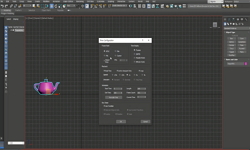애니메이션이나 실사영화에서 카메라는 감독, 배우, 그리고 관객의 시점을 대변하는 중요한 커뮤니케이션의 수단이다. 애니메이션에서 카메라의 사용방식은 영화매체에서 사용되는 영상 ...
http://chineseinput.net/에서 pinyin(병음)방식으로 중국어를 변환할 수 있습니다.
변환된 중국어를 복사하여 사용하시면 됩니다.
- 中文 을 입력하시려면 zhongwen을 입력하시고 space를누르시면됩니다.
- 北京 을 입력하시려면 beijing을 입력하시고 space를 누르시면 됩니다.

3D 애니메이션과 2D 애니메이션에서 표현된 카메라 움직임 특성에 대한 고찰 = A Study on Characteristics of Camera Movement that is expressed in 3D Animation and 2D Animation - Focused on Brad Bird’s Animations
한글로보기https://www.riss.kr/link?id=A100469985
- 저자
- 발행기관
- 학술지명
- 권호사항
-
발행연도
2015
-
작성언어
Korean
- 주제어
-
등재정보
KCI등재후보
-
자료형태
학술저널
-
수록면
277-288(12쪽)
- DOI식별코드
- 제공처
-
0
상세조회 -
0
다운로드
부가정보
국문 초록 (Abstract)
애니메이션이나 실사영화에서 카메라는 감독, 배우, 그리고 관객의 시점을 대변하는 중요한 커뮤니케이션의 수단이다. 애니메이션에서 카메라의 사용방식은 영화매체에서 사용되는 영상 문법에 기초하고 있지만 2D 애니메이션과 3D 애니메이션과 같이 상이한 제작방식과 이미지에서 기인하는 특수성을 고려하여 효과적으로 카메라 움직임을 창조해야 한다. 본 연구에서는 애니메이션에서 평면성과 입체성의 카메라 움직임 특성에 따른 활용과 2D와 3D의 애니메이션에서 사용된 카메라 움직임유형의 차이점을 살펴보기 위하여 동일 감독이 제작한 2D와 3D 애니메이션 작품을 각각 분석하였다. 그 결과 2D와 3D 애니메이션 모두 카메라 움직임의 사용 비율이나 방법, 그 유형에 대한 선호도가 매우 유사하게 나타났다. 따라서 카메라 움직임의 사용은 2D와 3D의 이미지나 제작 방식의 차이와는 무관하다고 볼 수 있다. 평면 이미지로 제작되는 2D나 입체 오브젝트로 제작되는 3D 애니메이션 모두 몰입 감을 높이기 위하여 평면의 스크린 위에 입체적 환영을 효과적으로 표현하려는 목적은 동일하기 때문이다. 카메라 움직임은 이미지의 종류나 제작 방식에 의해 결정되기보다 카메라 움직임의 태생적 목적에 따라 연출 적 동기와 함께 결정되어져야 할 것이며 2D와 3D의 제작 방식과 관계없이 입체적 카메라 움직임의 유형을 사용하여 보다 매끄러운 입체적 환영을 표현해야 할 것이다.
다국어 초록 (Multilingual Abstract)
The camera that represents the director, actor, and audience’s point of view in animation and live action film is a very important method of communication. In animation, the method of using the camera is based on the film grammar but camera movement...
The camera that represents the director, actor, and audience’s point of view in animation and live action film is a very important method of communication. In animation, the method of using the camera is based on the film grammar but camera movement should be created with consideration of different production methods and different types of images such as 2D or 3D animations. This study analyzes 2D and 3D animations made by same director to search for differences of the types of camera movement that is used 2D and 3D animation, and to study how to use camera movement depending on its characteristics whether it is flat or deep. As a result, using rate and method, preference about types of camera movement were very similar for both 2D and 3D animation. Therefore, the method of using camera movement is irrelevant to the different ways of production or different types of image such as 2D or 3D. Because the purpose is to effectively express 3 dimensional visions on the 2D screen surface to enlarge a sense of immersion is same for both 2D animation made by flat image or 3D animation made by three dimensional objects. Camera movement should be decided by its original purpose and motivation for the direction rather than be decided by image types or ways of production. We should create a believable 3D vision on the screen by using 3 dimensional camera movements no matter the different production types of 2D or 3D animation.
목차 (Table of Contents)
- 요약
- Abstract
- 1. 서론
- 2. 영상에서 표현되는 카메라 움직임
- 3. 애니메이션에서 표현된 카메라 움직임 특성
- 요약
- Abstract
- 1. 서론
- 2. 영상에서 표현되는 카메라 움직임
- 3. 애니메이션에서 표현된 카메라 움직임 특성
- 4. 결론
- 참고문헌
동일학술지(권/호) 다른 논문
-
스마트 폰 애플리케이션 아이콘의 아날로그 감성형용사 적용에 관한 연구
- 한국디지털디자인협의회
- 신지윤(Shin Jiyun)
- 2015
- KCI등재후보
-
공간 이용자의 이동빈도를 이용한 행위자 기반 공간 네트워크 분석모델 연구
- 한국디지털디자인협의회
- 권지훈(Kweon, Jihoon)
- 2015
- KCI등재후보
-
- 한국디지털디자인협의회
- 권용철(Kwon, Yong Chul)
- 2015
- KCI등재후보
-
사물인터넷 환경에서 사용자 만족도 향상을 위한 UX디자인 활용 체계 연구
- 한국디지털디자인협의회
- 김병택(Kim, Byung Taek)
- 2015
- KCI등재후보




 DBpia
DBpia



